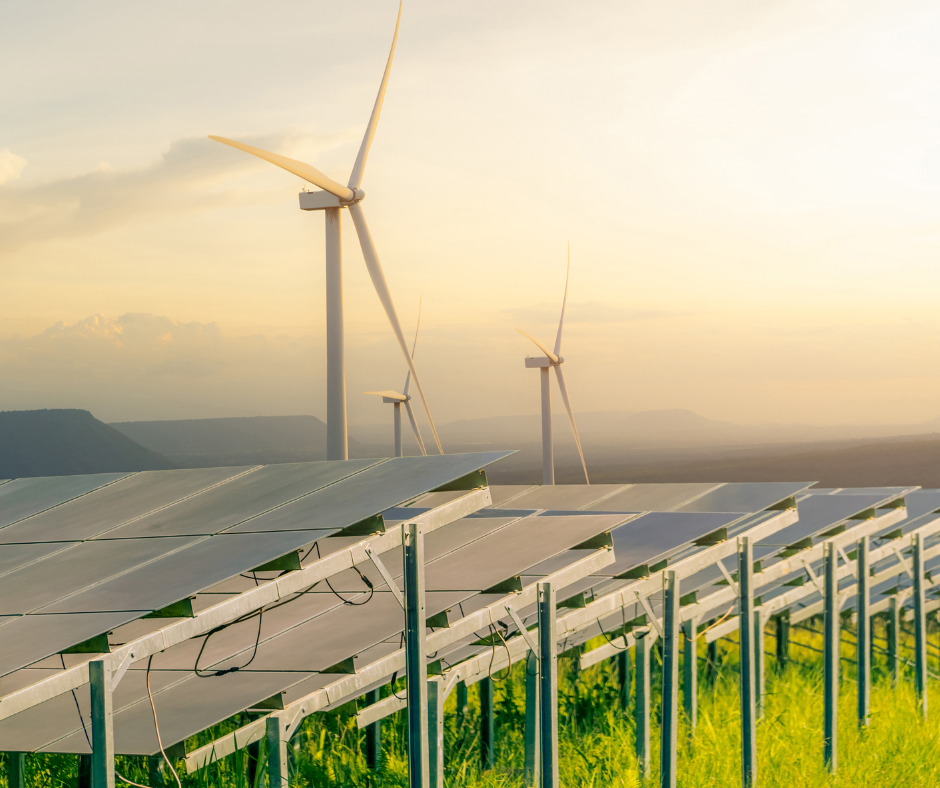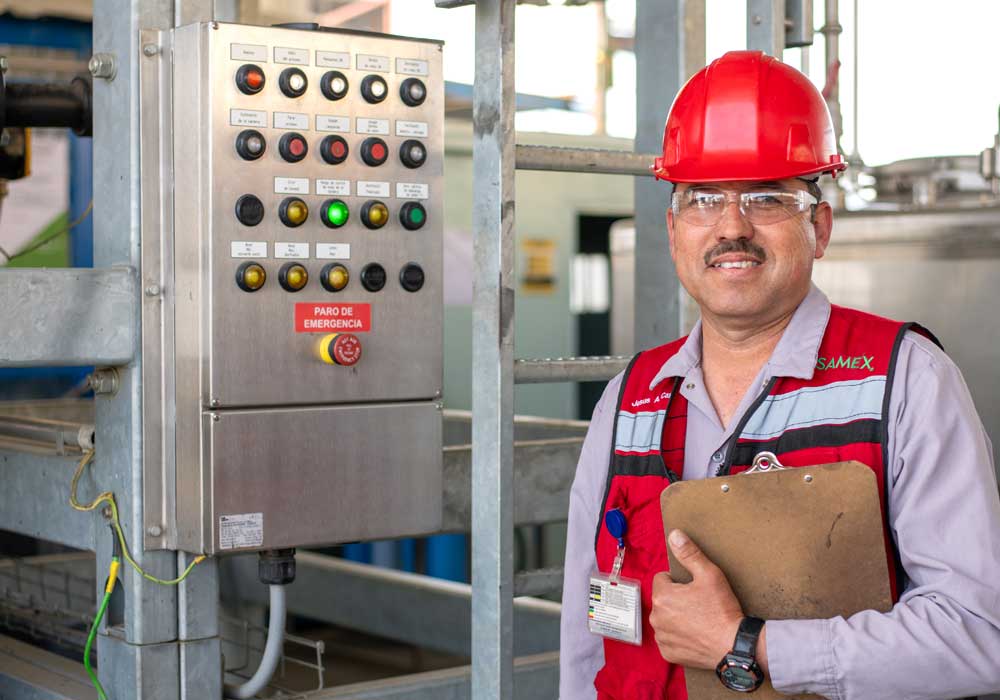Sustainability Definition Example In Today’s Industry
Sustainability isn’t just a buzzword in today’s industry - it’s redefining how manufacturers do business.
5 min read
 Larry Burton
:
Oct 30, 2024 10:05:29 AM
Larry Burton
:
Oct 30, 2024 10:05:29 AM
.png)
In today’s world, the need for sustainable practices in business operations is more pressing than ever.
A BCG/MIT study found that 90% of executives believe sustainability is important, yet only 60% incorporate it into their long-term business strategy and 25% incorporate it into their current business model. While many recognize its importance, it’s clear that there is still significant room for growth in integrating sustainability into both strategic planning and day-to-day operations.
Setting clear sustainability objectives can help you reduce your impact to the planet. Here are 10 sustainability objectives examples that can inspire your facility’s initiatives.
Many organizations have successfully implemented waste reduction initiatives, aiming to cut landfill waste significantly. Recycling programs, composting organic waste and minimizing packaging materials can all help a company meet these goals. Regular audits can help track progress and identify areas for improvement.
Companies like Unilever have committed to achieving zero waste in their manufacturing sites, recycling or reusing all waste produced. Additionally, facilities can implement digital document management systems to minimize paper waste.
Other manufacturing companies that generate hazardous waste have turned to solvent distillation to ensure nothing is wasted. Solvent distillation is a process used to recover and purify waste solvents by heating them to their boiling point, capturing the vapor and then condensing it back into a liquid, allowing for reuse and reducing waste.
At Samex, we ensure every byproduct is used, including distillation bottoms, which are sediments and other matters separated from the solvent. Distillation bottoms are sent to the alternative fuel formulation section of the plant where they are formulated for repurposing. Any waste water that is generated is repurposed as well. This conserves the natural resource of water while ensuring nothing is sent to landfills.
You can learn more about this sustainable process in our article, How a Solvent Reclaiming Unit Can Minimize Environmental Impact.
Regular workshops and competitions can be organized to encourage employees to come up with innovative ideas for waste reduction. For instance, a facility might hold a “zero waste week” challenge where employees track their waste output, fostering a competitive yet collaborative environment focused on sustainability.
Improving energy efficiency is a critical objective for many facilities. Setting a target to achieve a 25% reduction in energy.png?width=300&height=251&name=Insurance%20Solutions%20(5).png) consumption over the next five years is a practical example. Facilities can implement energy-efficient technologies, such as LED lighting, smart thermostats and energy management systems. Regular monitoring and employee training can further support these initiatives.
consumption over the next five years is a practical example. Facilities can implement energy-efficient technologies, such as LED lighting, smart thermostats and energy management systems. Regular monitoring and employee training can further support these initiatives.
Companies like Google have made significant strides in energy efficiency, using AI to optimize their energy consumption in data centers. The company reduced the amount of energy used for cooling by up to 40%.
Your facility can utilize energy audits to identifcanvay areas for improvement, such as upgrading to energy-efficient appliances or improving insulation to reduce heating and cooling costs.
Your business can also reduce its energy usage indirectly by working with partners who prioritize energy efficiency as well. For example, the solvent recycling process at Samex includes the use of highly energy-efficient technology that also results in high recovery volume. Samex’s solvent distillation process reduces volatile organic compound (VOC) emissions while enabling the recycling and sustainable processing of chemicals.
Achieving carbon neutrality is a bold objective for many organizations. A facility might commit to becoming carbon neutral by 2030 or 2050, which could involve transitioning to renewable energy sources, such as solar or wind, investing in carbon offset programs, and converting to electric vehicles for their fleet.
A well-defined roadmap will help track progress toward this goal of reducing your company’s carbon footprint.
For instance, IKEA has pledged to become climate positive by 2030, which involves reducing more greenhouse gas emissions than the entire IKEA value chain emits. Your facility can follow suit by exploring partnerships with renewable energy providers to power operations with clean energy or investing in solar panels to generate on-site energy.
Organizations are increasingly recognizing the importance of sustainable sourcing. A facility could set a target to source 100% of its materials from certified sustainable suppliers or local sources by a specific date. This not only supports sustainable practices but also boosts the local economy. Building strong relationships with suppliers can enhance accountability and transparency.
Companies like Patagonia are well-known for their commitment to sustainable sourcing, ensuring that their materials are organic and ethically sourced. Your facility can similarly conduct supplier audits to assess sustainability practices and prioritize working with vendors who share your sustainability values.
Water conservation is another crucial objective for many facilities. A facility could aim to reduce water usage by 30% within five years by implementing efficient irrigation systems, rainwater harvesting and low-flow fixtures. Regular monitoring can help track progress and identify leaks or inefficiencies.
five years by implementing efficient irrigation systems, rainwater harvesting and low-flow fixtures. Regular monitoring can help track progress and identify leaks or inefficiencies.
For example, Coca-Cola has set ambitious water stewardship goals, aiming to replenish more water than it uses in its beverages. Your facility can emulate this by installing rainwater harvesting systems to collect and reuse rainwater for landscaping and non-potable applications, reducing overall water consumption.
Incorporating water-efficient landscaping, such as xeriscaping or using drought-resistant plants, can significantly lower water usage. Educating employees about water-saving practices like reporting leaks and using water wisely, can also foster a culture of conservation throughout the organization.
Facilities can also focus on enhancing biodiversity in their operations. An example objective could involve restoring a specific number of acres of natural habitat or implementing wildlife-friendly practices, such as creating green spaces or pollinator gardens.
Collaborating with local conservation groups can amplify these efforts and raise awareness in the community.
Organizations like Microsoft have initiated projects to enhance biodiversity on their campuses by creating wildlife habitats and planting native species. Your facility can similarly engage in community restoration projects or support local parks by organizing tree-planting days or creating wildlife corridors around the facility.
Facilities can also incorporate sustainable landscaping practices by reducing pesticide and herbicide use and opting for organic alternatives. Educating employees about the importance of biodiversity can create ambassadors for these initiatives, encouraging them to advocate for wildlife-friendly practices in their personal lives as well.
Engaging employees in environmental sustainability initiatives can help foster a culture of social responsibility. Regular.png?width=300&height=251&name=Insurance%20Solutions%20(13).png) workshops or training sessions can also help increase awareness and participation in sustainability practices.
workshops or training sessions can also help increase awareness and participation in sustainability practices.
Interface, a global carpet tile manufacturer, has a strong sustainability culture, with employee-led initiatives driving their sustainability efforts. Your facility can implement similar structures, allowing employees to take ownership of specific projects like a recycling program or energy-saving campaigns, encouraging innovation and accountability.
Recognizing and rewarding outstanding contributions to sustainability can further motivate employees and foster a sense of community around environmental efforts.
Developing sustainable products is a significant objective for many companies. Companies like Nestlé are actively working toward creating sustainable product lines, including plant-based alternatives and using sustainable packaging materials.
Your facility can conduct market research to identify consumer preferences for eco-friendly products and align product development accordingly.
Involving employees in product development can also lead to innovative solutions. Hosting brainstorming sessions or design thinking workshops can generate ideas for new sustainable products or improvements to existing offerings, ensuring that sustainability is integrated into the product lifecycle from the outset.
Building strong connections with the local community can enhance your facility's sustainability efforts. Setting objectives to engage with local communities on sustainability issues—such as hosting educational workshops or partnering with local schools—can foster environmental stewardship. These initiatives not only benefit the community but also help establish the facility as a responsible corporate citizen.
For example, Starbucks actively engages in community service projects, including environmental education programs and community clean-up events. This is common even among the smallest businesses where employees volunteer their time. Your facility can organize similar initiatives, providing employees with opportunities to volunteer in local environmental efforts while strengthening community ties.
Creating a community advisory board can facilitate ongoing dialogue with local stakeholders, ensuring that your facility remains responsive to community needs and priorities.
Transitioning to a circular economy model can significantly reduce waste and resource consumption. A facility might aim to create a closed-loop system for its products, where materials are reused or recycled at the end of their lifecycle.
Implementing take-back sustainability programs or collaborating with partners to repurpose recycled materials can enhance this objective.
Educating employees about circular economy principles can foster a mindset of reuse and recycling. Hosting workshops on how to design for durability and recyclability can empower your team to innovate and create products that align with sustainable development goals.
Setting sustainability objectives not only benefits the environment but also enhances your facility's efficiency, reputation and long-term viability. By adopting any or all of these 10 examples, your facility can take meaningful steps toward becoming more sustainable and contributing positively to the planet.

Sustainability isn’t just a buzzword in today’s industry - it’s redefining how manufacturers do business.
.png)
As businesses look for strategies to balance productivity with environmental responsibility, integrating sustainable resources has become a popular...

In today's eco-conscious world, businesses are increasingly seeking sustainable methods to manage waste, and the recycling of flammable fluids is no...